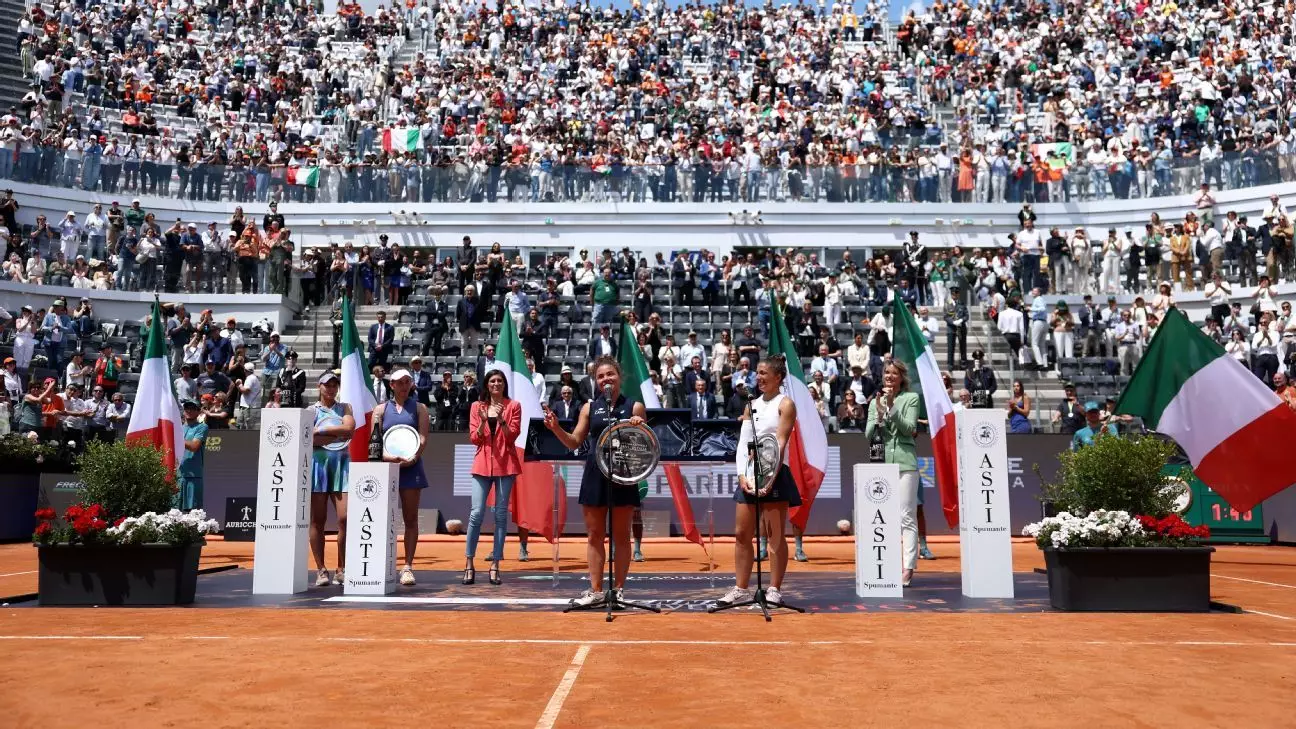Unleashing Potential: Italy Aims for Tennis Supremacy
Italy’s journey to tennis supremacy is a captivating tale of ambition, talent, and relentless pursuit of excellence. It’s fascinating to witness a nation known for its rich history and culinary delights now making headlines on the global tennis stage. As someone who loves both food and sports, I find this intersection intriguing. It’s not just about the players; it’s about a cultural shift that embodies Italy’s spirit of innovation and passion.
I’ve always believed that sports, much like cooking, are about the ingredients you start with and the care you take in crafting something meaningful. Italy is doing just that with its new generation of tennis stars like Jannik Sinner and Jasmine Paolini. Their achievements aren’t isolated victories; they mark a collective awakening for Italian tennis, reflecting a broader ambition to redefine their place in this competitive sport. Watching them play reminds me of crafting a dish with precision and flair—every move calculated yet effortlessly graceful.
There’s something truly inspiring about Italy’s determination to challenge the status quo in tennis. Just as chefs innovate by blending traditional techniques with modern twists, Italy is pushing boundaries in tennis with fresh perspectives and bold strategies. This drive doesn’t just manifest on the court but also through visionary leadership aiming to elevate Italy in the international tennis community.
Key Takeaways
- Italy is leveraging its new generation of athletes to position itself as a leader in global tennis.
- Visionary goals from leaders like Angelo Binaghi aim to elevate the Italian Open alongside Grand Slams.
- Significant investments in infrastructure demonstrate Italy’s commitment to becoming a tennis powerhouse.
- Innovative strategies highlight Italy’s dedication to fostering growth and inclusivity in tennis.
The Rise of Italian Tennis Stars
Italy’s rise in the world of tennis can’t be discussed without mentioning its young stars who are capturing our imaginations. Jannik Sinner, with his meteoric ascent in the ATP rankings, personifies ambition and discipline. His journey is more than just personal success; it symbolizes a renaissance for Italian tennis. Similarly, Jasmine Paolini’s historic win at the Italian Open after four decades highlights the potential brewing within Italy’s borders.

This new generation isn’t just playing to win titles; they’re playing to reinvigorate Italian tennis with a fresh ethos. Their stories resonate with fans globally, creating a narrative that goes beyond mere statistics. It’s about heart, dedication, and an unyielding desire for excellence—qualities that resonate well within any field, be it sports or gastronomy.
Angelo Binaghi’s Visionary Leadership
Angelo Binaghi, president of the Italian Tennis and Padel Federation, has set his sights high with aspirations that could redefine global tennis dynamics. His vision includes transforming the Italian Open into a Grand Slam-level event—a goal that challenges traditional structures while promising innovation. It’s akin to introducing an avant-garde dish in a menu full of classics; it stirs excitement and fosters dialogue about what’s possible.
Binaghi’s ambitions are rooted in the current momentum within Italian tennis, emphasizing forward-thinking strategies and structural improvements. His leadership invites us to consider how change can invigorate established norms, much like how new culinary techniques can refresh classic dishes. The push for inclusivity and growth echoes across industries, making his approach universally relevant.
The Strategic Role of Rome
Rome has emerged as a central hub for this burgeoning tennis culture, hosting significant events such as the ATP Finals since 2021—a commitment extending until 2030. This cements Rome’s role not just as a historical city but as a dynamic center for modern sports. The Italian Open itself acts as a bridge between traditional Grand Slams and other major tournaments.

This development is akin to Rome serving as both custodian of history and beacon of progress—a dual role that enriches its identity while offering athletes an elite platform to shine. Hosting events like these not only boosts Italy’s credentials but also enhances its infrastructure capabilities—a vital step towards achieving Binaghi’s ambitious goals.
Investments in Infrastructure
A critical aspect of Italy’s strategy involves significant investments in infrastructure designed to support its growing reputation. Plans for a retractable roof over Campo Centrale stadium reflect confidence in ongoing modernization efforts—similar to how innovative kitchens expand their capabilities with state-of-the-art equipment.
The expansion from 12 to 20 hectares demonstrates commitment not only to size but quality—enhancing spectator experiences while accommodating larger audiences. These developments signify readiness not just for today but for future challenges—a proactive approach mirrored across successful industries worldwide.
Sustainability and Growth: A Vision for the Future
Binaghi’s strategic vision encompasses sustainability alongside growth—an outlook aligned with contemporary values across sectors globally including sports management where diversity thrives through innovation rather than stagnation under legacy systems alone.

This approach positions Italy uniquely within international arenas; escaping narrow narratives tied solely around traditional Grand Slams by embracing broader trends emphasizing competitive balance along diverse lines—all hallmarks essential towards realizing potential fully unleashed beyond conventional limits set historically upon any given field whether culinary or athletic alike!
Final Thoughts
The path Italy is carving out in the world of tennis serves as an inspiring blueprint for how tradition can coexist harmoniously alongside modernity—a testament perhaps best appreciated when viewed through lenses familiar both within kitchens bustling amid aromas past present future alike!
Ultimately what makes story compelling isn’t merely success achieved nor accolades garnered rather journey embarked upon characterized equally by spirit resilience unwavering dedication hallmarks defining essence anything truly remarkable whether dish crafted hands skilled chef racquet wielded deftly athlete determined succeed against odds stacked high each step taken unwavering faith possibilities abound therein lies magic unfolds captivating audiences everywhere regardless domain pursued passionately engaged fully realized potential awaits exploration adventure beckons eager hearts ready embrace unknown horizons ahead inviting us join celebration unfolding right before very eyes today tomorrow beyond eternally evermore!
Italy Tennis Supremacy
Italian Open
Jannik Sinner
Tennis Infrastructure


Leave a Reply